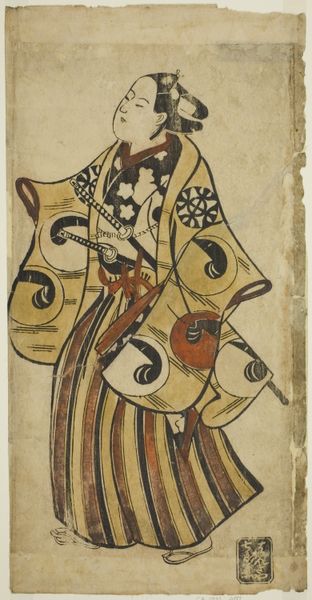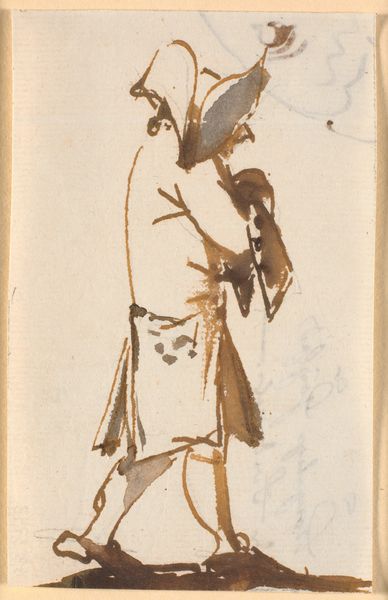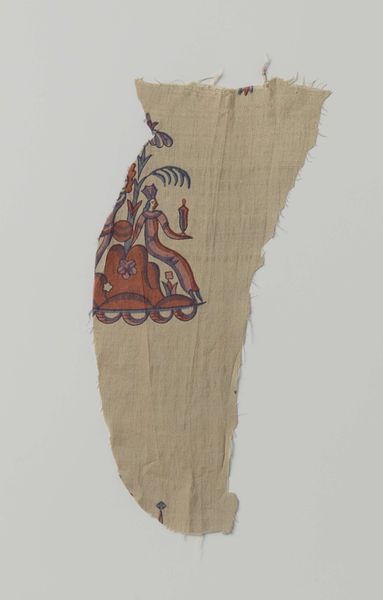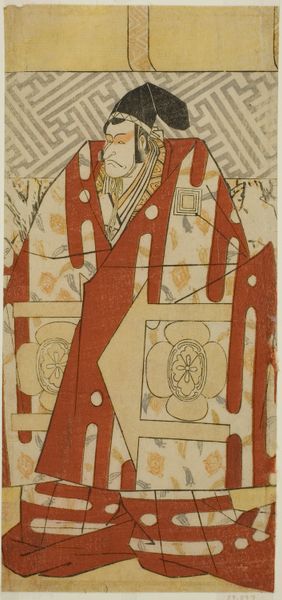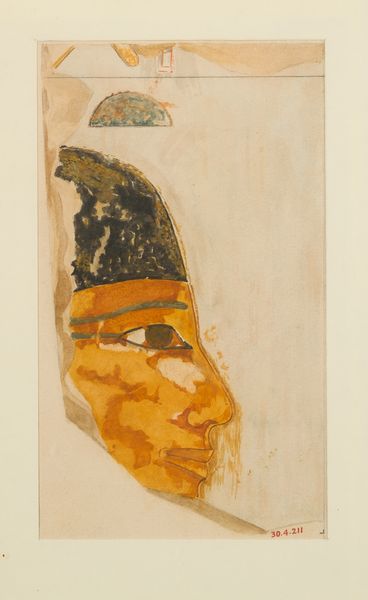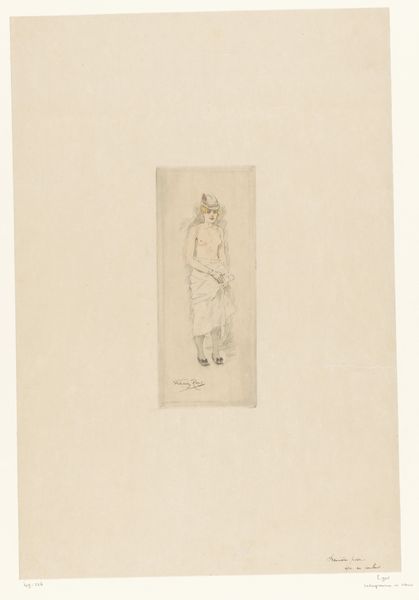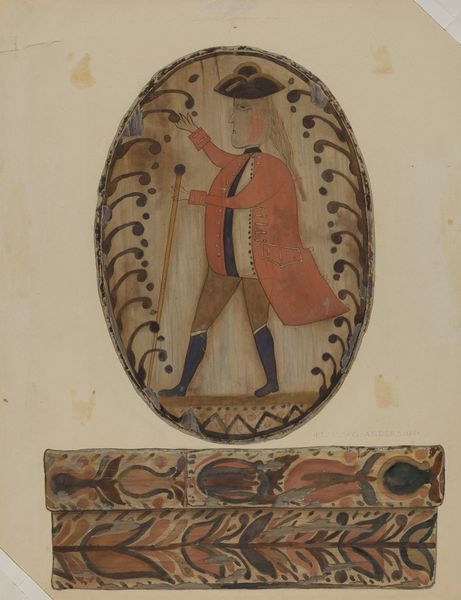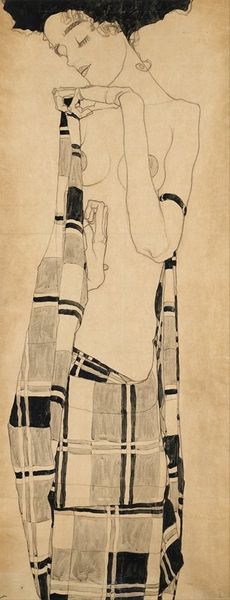
painting, watercolor
#
narrative-art
#
painting
#
ancient-egyptian-art
#
figuration
#
watercolor
#
egypt
#
ancient-mediterranean
#
history-painting
Dimensions: H. 28 cm (11 in); w. 18 cm (7 1/16 in) scale 1:1
Copyright: Public Domain
Editor: Here we have "Man with a Bow Case and Quiver", an Egyptian watercolor painting that dates back to 1473 BC. It feels very fragmented and incomplete, almost like we're seeing a puzzle with many pieces missing. What kind of narrative can we piece together from what remains? Curator: Indeed. The fragmented nature of this work speaks volumes about the vagaries of history and how our access to the past is often piecemeal. Given its origins in ancient Egypt, this fragment likely played a role in a larger narrative program within a tomb or temple setting. How might its function shape our perception of this image today? Editor: Hmm, knowing it was originally part of something bigger makes me wonder about its public function. How would people at the time have experienced it, compared to how we see it now, isolated in a museum? Curator: Exactly. In its original context, the figure, probably a noble or royal archer, was likely meant to reinforce ideas of power, order, and the subjugation of chaos. We see vibrant colors, strategic pattern making to convey that message and wealth. Seeing it isolated flattens the message. Editor: So, taking it out of its context not only obscures its original meaning, but also changes its function and reception for us in the present? Curator: Precisely. It becomes a historical object, studied and appreciated for its aesthetic qualities or its contribution to our understanding of ancient Egyptian society. The museum then is its new context, the location influencing its significance now. Editor: It’s interesting to think how its meaning transforms based on where it is and who’s viewing it, across centuries. Curator: The politics of display and the selective preservation of history always shape what stories we get to tell, and how we tell them. Considering such fragments then challenges us to fill in gaps while acknowledging those imposed fractures.
Comments
No comments
Be the first to comment and join the conversation on the ultimate creative platform.

